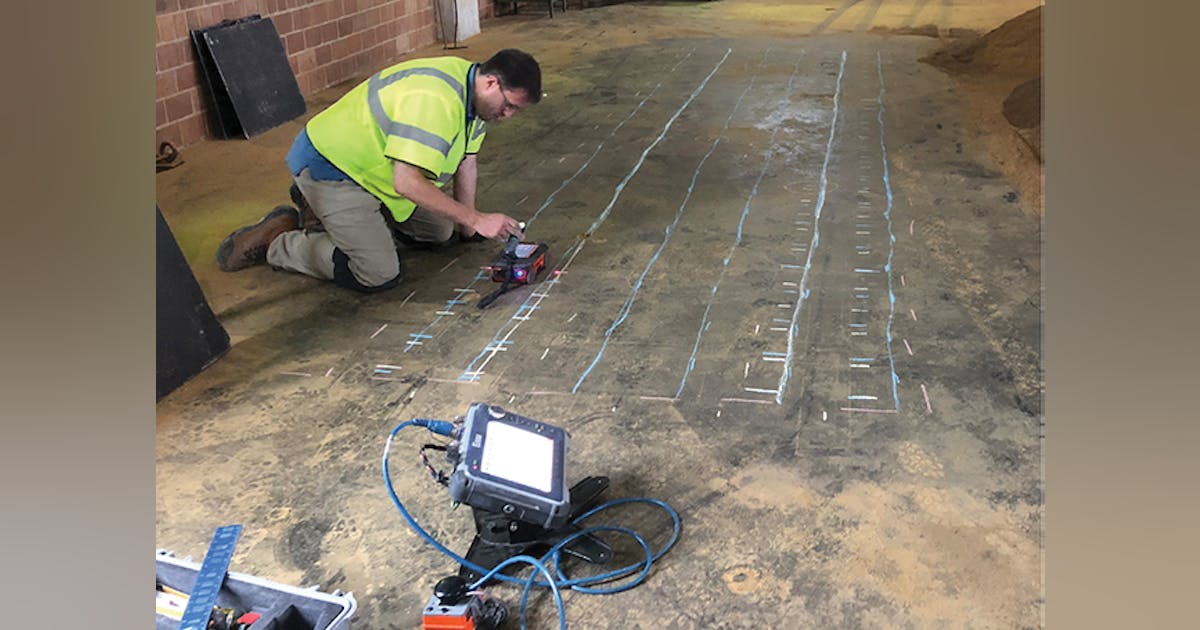Key Benefits of Utilizing Concrete Scanning Modern Technology
Key Benefits of Utilizing Concrete Scanning Modern Technology
Blog Article
Past the Surface Area: Leveraging Advanced Concrete Scanning Techniques for Unmatched Accuracy and Insight
In the realm of construction and facilities upkeep, the pursuit for accuracy and thoroughness is incessant. Advanced concrete scanning strategies have emerged as essential devices in this pursuit, providing a glance beneath the surface area to unveil a world of important understandings. By taking advantage of sophisticated innovations, specialists can reveal abnormalities, evaluate the problem of concrete structures, and make notified choices that shape the training course of projects. The effects of these methods expand far past mere surface-level analyses, guaranteeing a deepness of accuracy and understanding that is unrivaled.
Importance of Advanced Concrete Scanning
The value of making use of advanced concrete scanning methods lies in the unparalleled accuracy they provide for detecting sub-surface abnormalities and making certain structural stability. By utilizing cutting-edge innovations such as ground-penetrating radar (GPR), electromagnetic induction, and progressed finder imaging, construction experts can dive under the surface area of concrete frameworks with a level of accuracy that far goes beyond typical inspection methods. Concrete Scanning. These techniques enable the identification of hidden risks like rebar rust, spaces, channels, or post-tension cords that can jeopardize the stability and safety and security of a framework with time
Moreover, advanced concrete scanning gives indispensable understandings right into the general problem of a concrete aspect without the requirement for invasive actions, decreasing the danger of causing damages throughout the evaluation process. The capability to determine the specific area and depth of possible issues allows for targeted repair services and upkeep, eventually prolonging the life-span of the framework and enhancing its efficiency. Fundamentally, the significance of innovative concrete scanning can not be overstated in the world of building and construction and facilities upkeep, where precision and integrity are vital.
Sorts Of Cutting-Edge Technologies

Anomalies and Defect Discovery

Along with GPR, concrete scanning methods like thermography and impact-echo screening are likewise reliable in discovering abnormalities and flaws. Thermography uses infrared modern technology to recognize variants in surface area temperature level, showing possible locations of concern such as delamination or moisture ingress. On the various other hand, impact-echo testing involves analyzing acoustic reactions to discover spaces, fractures, and other problems within the concrete. By leveraging these sophisticated methods, specialists can proactively address architectural concerns, making certain the durability and safety of concrete structures.
Assessing Concrete Condition
Just how can designers accurately examine the problem of concrete frameworks to ensure their longevity and safety and security? Evaluating the concrete problem is a crucial element of preserving infrastructure integrity. Different sophisticated concrete scanning methods are used for this purpose. Ground-penetrating radar (GPR) is generally utilized to assess the interior structure of concrete, identifying spaces, cracks, and various other anomalies that may compromise its toughness. Furthermore, impact-echo screening can supply insights right into the thickness and honesty of concrete aspects. you can look here Ultrasonic pulse rate testing is an additional important approach for examining concrete quality by determining the speed of acoustic waves through the product.
Additionally, visual inspection stays an essential component of concrete problem analysis. Engineers visually take a look at the surface area for signs of damage, such as spalling, breaking, or discoloration. Integrating non-destructive screening approaches with visual assessments permits for a comprehensive examination of concrete problem, making it possible for designers to recognize potential issues beforehand and implement prompt upkeep or fixings. By leveraging these advanced methods, designers can make certain the long-term sturdiness and security of concrete frameworks.
Enhancing Decision-Making Procedures
In the world of infrastructure management, maximizing decision-making procedures is critical for guaranteeing the reliable upkeep and longevity of concrete structures. Boosted decision-making processes in concrete monitoring include utilizing innovative scanning methods to collect in-depth data on the problem of structures. By leveraging modern technologies such as ground-penetrating radar and 3D imaging, stakeholders can make educated choices relating to replacement, repair service, or reinforcement approaches.
These progressed scanning techniques give invaluable understandings into the inner structure of concrete, determining possible problems such as spaces, splits, or rust that may not show up on the surface area. This level of detailed details enables for positive maintenance planning, decreasing the danger of structural failings and boosting the overall life expectancy of concrete frameworks.
Moreover, by integrating digital paperwork and analysis devices right into the decision-making procedure, stakeholders can track the advancement of concrete problems gradually, making it possible for anticipating upkeep methods and enhancing source allowance. Eventually, the combination of sophisticated concrete scanning techniques enhances decision-making processes by providing unparalleled precision, understanding, and performance in framework administration.
Final Thought
To conclude, advanced concrete scanning techniques offer exceptional accuracy and insight in spotting anomalies, issues, and analyzing the problem of concrete frameworks. By leveraging sophisticated technologies, decision-making processes can be boosted, bring about more efficient and informed services for keeping and fixing concrete facilities. These methods play a vital duty in ensuring the security and browse around this site durability of concrete structures, making them a vital device in the area of building and construction and design.
In addition, progressed concrete scanning supplies vital insights into the total problem of a concrete aspect without the need for invasive procedures, reducing the threat of creating damage during the assessment procedure - Concrete Scanning. One more innovative modern technology is 3D X-ray scanning, which provides in-depth images of the interior framework of concrete, providing beneficial information without the demand for destructive testing. In Addition, Concrete Cover Meters are used to gauge the density of concrete cover over support bars accurately. Improved decision-making procedures in concrete management include making use of advanced scanning methods to collect detailed data on the problem of frameworks.In conclusion, advanced concrete scanning strategies offer unmatched accuracy and insight in detecting anomalies, flaws, and assessing the condition of concrete frameworks
Report this page